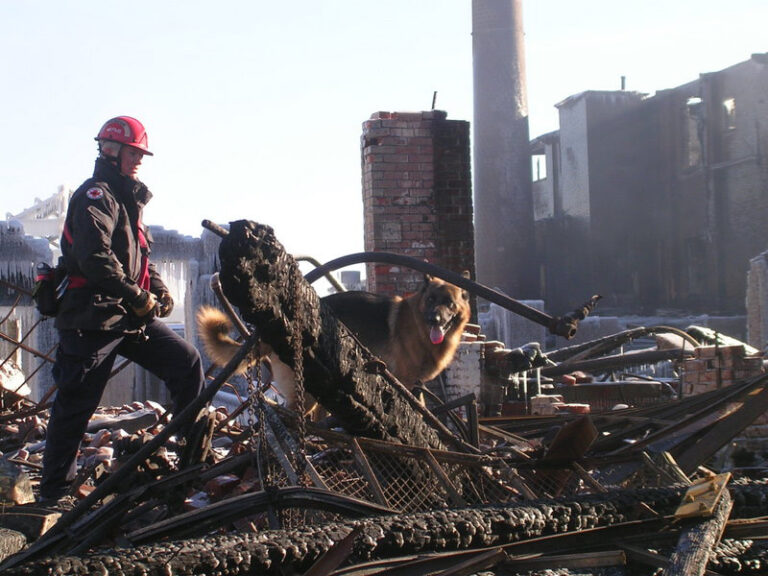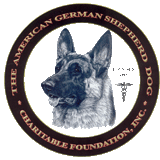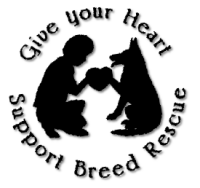
Search and rescue (SAR) dogs are trained to perform many tasks. Knowing what each type of dog can and can’t do is important to be able to quickly match the proper team with the task.
While there are no uniform standards at this time, many search and rescue volunteers use common terms and standards.
It is expected that an operational SAR dog will be:
The breed of the dog matters less than the training and aptitude of the dog.
Many dogs are cross-trained and are able to do several tasks well but it’s most effective to use the dog best trained for each specific task in a search. This allows a search effort to be maximized by utilizing the various types of dogs in conjunction with each other.
These are the most common tasks performed by a Search & Rescue (SAR) Dog
A Trailing dog (this includes the bloodhound) is trained for scent discrimination. The dog is usually worked in a harness and on leash. The dog is given an uncontaminated article belonging to the missing person. The dog is trained to follow that scent and no other. At times the dog may track or he may airscent. The dog will go wherever he smells that specific scent.
Contamination should not affect the work of this dog. The dog should be able to work pavements, streets and wilderness. If there is a good scent article and if there is a “point last seen”(PLS), a trailing dog can be the fastest way from point A (PLS) to point B (the victim).
Without a scent article and a PLS, a trailing dog can not work. There are separate evaluations for urban or wilderness work. A normal certification process would be by an outside evaluator and would include locating an unknown person, usually placed in a group or line-up, on a minimum of a 24 hour old trail in an unknown, heavily contaminated area with a varied terrain that includes streets, water, grass, pavement, etc.
An Airscenting dog is given an area (sector) to work with his handler. This dog and handler team will clear an area of any and all humans within their given sector. The dog should be working off leash and is working perpendicular to the wind to locate airborne scent. This is non-scent discriminating, anyone in this area will be found. Airscent teams should be deployed in areas surrounding where the victim was last seen and in areas of high probability. Airscent dogs are very effective when there is no scent article or no PLS or if too much time has elapsed. An operational airscent dog and handler team should have completed certification by an outside evaluator that would include map and compass skills, locating an unknown person within a certain amount of time in a substantially large unknown area and indicating this find in a predetermined manner.
A Tracking dog is trained to follow a path of a certain person. The dog is usually worked in a harness and leash. The usual method is a footstep to footstep approach. Many tracking dogs are following “crushed vegetation”. Some can follow pavement; some are not trained for this. Many tracking dogs are trained to follow “the freshest scent”. This is very effective when pursuing an escaped criminal or felon. This is also very effective if there is no available scent article. A dog that is trained to follow freshest scent would have difficulty tracking in an area that later becomes contaminated. A tracking dog test is usually done by an outside evaluator and is normally a minimum of a one-hour-old track, laid by an unknown person in an unfamiliar area. It may or may not have contamination or crosstracks.
A Disaster dog, (which includes FEMA) is trained to find human scent in a very unnatural environment. This would include collapsed buildings and areas effected by tornadoes and earthquakes. This is non-scent discriminating and the dog is specifically trained on unstable footing, small confined spaces and other settings not usually found in the wilderness. Although some disaster dogs have wilderness training, some do not. A disaster dog is usually evaluated on several components including agility, obedience, directional commands and the ability to find and give an alert (usually a bark) for extended duration.
A Cadaver dog has been trained to alert on dead human scent. This is non-scent discriminating and could be above ground only, or the dog could be trained for above and buried cadaver. Although many dogs have the potential to detect human scent whether dead or alive, the cadaver dog should have passed a specific evaluation that earns him the cadaver dog title. The evaluation process may include detection of very minute pieces of cadaver that may have been buried for a period of time.
A Water Recovery dog is trained to detect human scent that is in the water. This is non-scent discriminating and the dog usually works in a boat. Because of the current and general changes in the water it is very hard to pinpoint a body. Many teams will field three different dog/handler teams, each with no knowledge of what the other teams’ findings are. This has been found to help narrow down the dive areas.
The German Shepherd Dog Club of America is grateful to Vicki Wooters, CFP, CPDT, PDT, Dip. DT, Cert. CN for permission to use the written material and photo as the basis for this article.






Copyright ©1997- 2024 German Shepherd Dog Club of America, Inc. All Rights Reserved.
Site Designed by DC WEB DESIGNERS, a Washington DC Web Design Company.